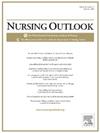作为危机的工作场所暴力:使用O 'Rourke的理论作为框架来促进角色清晰和职业角色承诺
IF 3.7
2区 医学
Q1 NURSING
引用次数: 0
摘要
工作场所暴力(WPV)针对护士,特别是来自病人和来访者的暴力,对职业和病人护理构成了重大挑战。护士在早期教育中就被介绍了“不伤害”的道德原则,然而当他们自己的安全受到威胁时,这一义务就变得复杂了。目的探讨护理人员的WPV经历及其对职业角色承诺和护理质量的影响。它提供了一个理论驱动的、以证据为基础的框架,指导护士管理人员和教育工作者解决脊髓灰质炎问题。方法借鉴社会学、心理学和WPV研究,本文采用O 'Rourke的中程理论来确定针对护理环境、医护人员和护士的干预措施。wpv不仅威胁到护士的人身安全,而且破坏了职业角色期望和义务之间的一致性,使他们的职业角色认同和承诺变得紧张。有效的战略和支持性干预至关重要,特别是来自护士领导的干预。结论通过理论驱动、循证战略解决WPV问题对于确保护士安全、加强职业角色认同和维持一支忠诚的护理队伍至关重要。本文章由计算机程序翻译,如有差异,请以英文原文为准。
Workplace violence as a crisis: Using O’Rourke’s theory as a framework to foster role clarity and professional role commitment
Background
Workplace violence (WPV) against nurses, particularly by patients and visitors, poses a significant challenge to the profession and patient care. Nurses are introduced to the ethical principle of Do No Harm early in their education, yet this obligation becomes complex when their own safety is at risk.
Purpose
This paper examines nurses' experiences with WPV and its impact on professional role commitment and quality care. It offers a theory-driven, evidence-based framework to guide nurse executives and educators in addressing WPV.
Methods
Drawing from sociology, psychology, and WPV research, this paper employs O’Rourke’s middle-range theory to identify interventions that address the environment of care, healthcare workers, and nurses.
Discussion
WPV not only threatens nurses’ physical safety but also disrupts the alignment between professional role expectations and obligations, straining their professional role identity and commitment. Effective strategies and supportive interventions, particularly from nurse leaders, are critical.
Conclusion
Addressing WPV through theory-driven, evidence-based strategies is essential to ensuring nurse safety, strengthening professional role identity, and sustaining a committed nursing workforce.
求助全文
通过发布文献求助,成功后即可免费获取论文全文。
去求助
来源期刊

Nursing Outlook
医学-护理
CiteScore
6.20
自引率
7.00%
发文量
109
审稿时长
25 days
期刊介绍:
Nursing Outlook, a bimonthly journal, provides innovative ideas for nursing leaders through peer-reviewed articles and timely reports. Each issue examines current issues and trends in nursing practice, education, and research, offering progressive solutions to the challenges facing the profession. Nursing Outlook is the official journal of the American Academy of Nursing and the Council for the Advancement of Nursing Science and supports their mission to serve the public and the nursing profession by advancing health policy and practice through the generation, synthesis, and dissemination of nursing knowledge. The journal is included in MEDLINE, CINAHL and the Journal Citation Reports published by Clarivate Analytics.
 求助内容:
求助内容: 应助结果提醒方式:
应助结果提醒方式:


